A portrait, a phone call and a Black Sacramento family’s fight for land and legacy
- Oops!Something went wrong.Please try again later.
In the Spotlight is a Sacramento Bee series that digs into the high-profile local issues that readers care most about. Story idea? Email metro@sacbee.com.
The telephone call that November day was as random as the discovery that prompted it.
A long-lost portrait of Abraham Lincoln once owned by Jonathan Burgess’ great-grandparents, Anna and Rufus M. Burgess, two of Coloma’s earliest Black settlers, had found its way to a bench in a tiny post office hundreds of miles away in rural Kern County. Their names were inscribed behind the wooden frame.
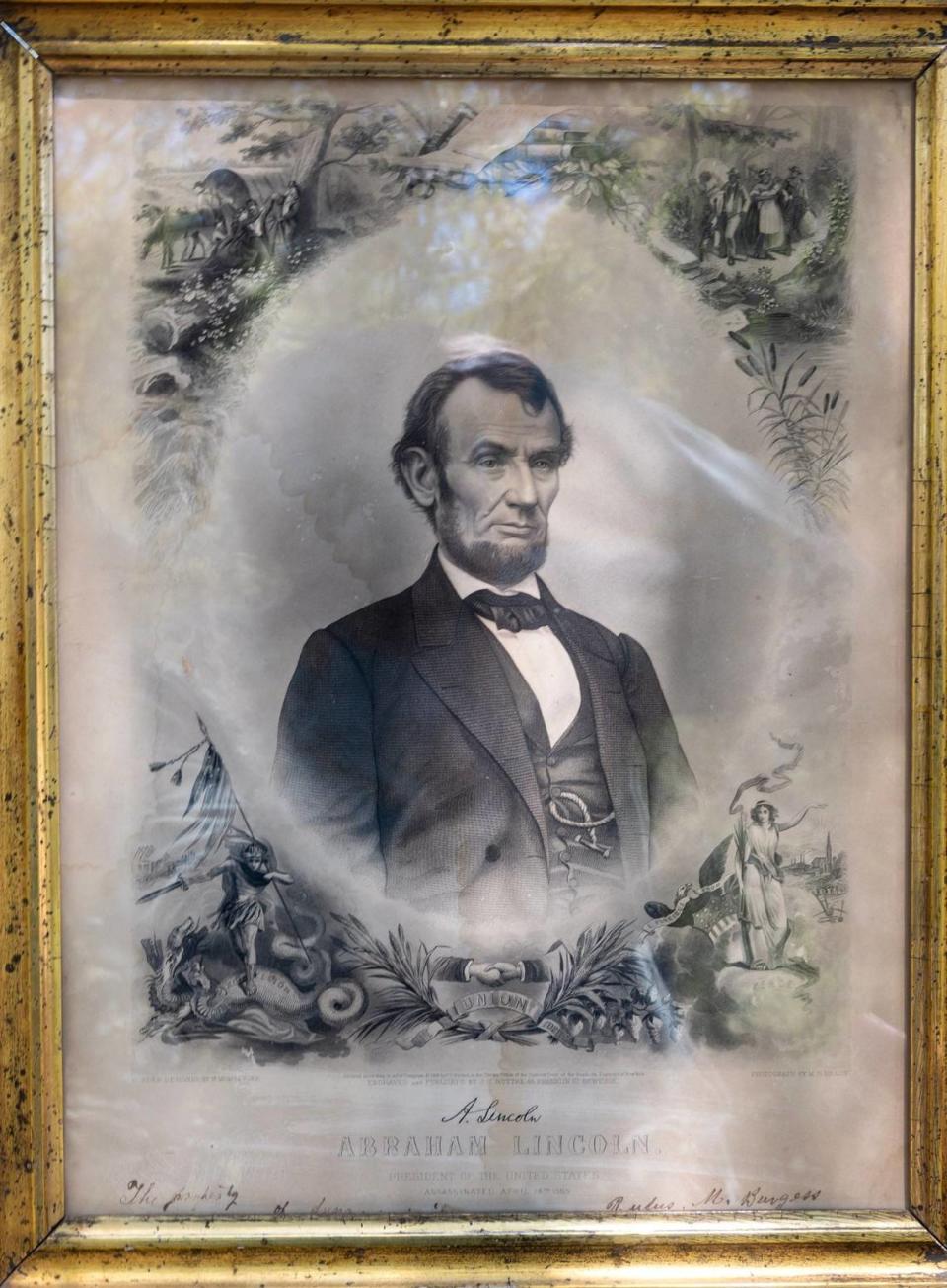
“She said she believed she had something that had belonged to my ancestral family — I couldn’t wait to call her,” said Jonathan Burgess. “How did this picture make it from Coloma to the hills of Bakersfield?”
Burgess could not make the nearly 300-mile trek until March to retrieve the portrait from Cathy Jameson and daughter Jalynn McClain, of tiny Glennville, California, population 133.
“It was in a little country post office just leaning against the bench,” Cathy Jameson told Burgess as McClain captured on video the moment Burgess was reunited with the portrait. “I brought it home and my daughter’s like, ‘Mama, you’re always bringing stuff home.’”
How a treasured heirloom lost to time found its way to a remote hamlet in the Kern County hills northeast of Bakersfield hundreds of miles from the home of Burgess’ Coloma ancestors is its own mystery.
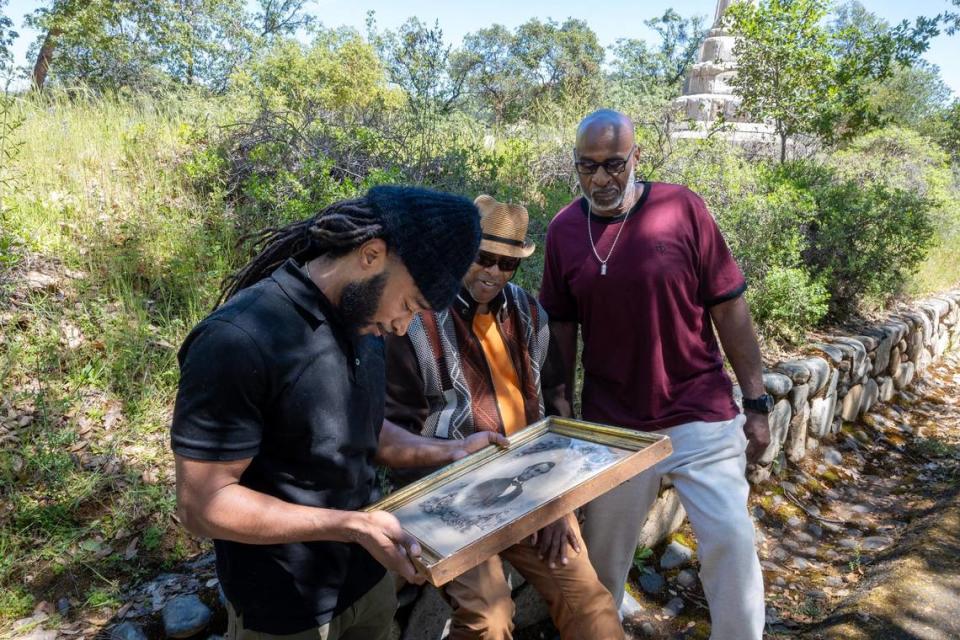
But for Burgess, a Sacramento battalion chief and a national face in the fight for reparations for Black Californians, it’s one more piece of his ancestors’ Gold Country legacy and his family’s ongoing struggle to reclaim the land their forebears were forced to give away more than 70 years ago.
Burgess and twin brother Matthew, a Sacramento police officer, have spent years researching their family’s California history that dates to the Gold Rush and begins at its epicenter: Coloma.
James Marshall famously discovered gold in the American River there in 1848, two years before Rufus Burgess arrived in 1850. Rufus Burgess mined gold in the river to buy his way out of bondage.
Rufus Burgess’ son, the Rufus M. of the long lost portrait, would build a life, family and livelihood in the foothills town he helped to shape. The Burgess family owned and farmed the land from the mid-1800s into the middle of the last century.
That ended when the state of California took the land through eminent domain at the end of World War II. The land, about 50 miles east of Sacramento in El Dorado County, is now the site of Marshall Gold Discovery State Historic Park.
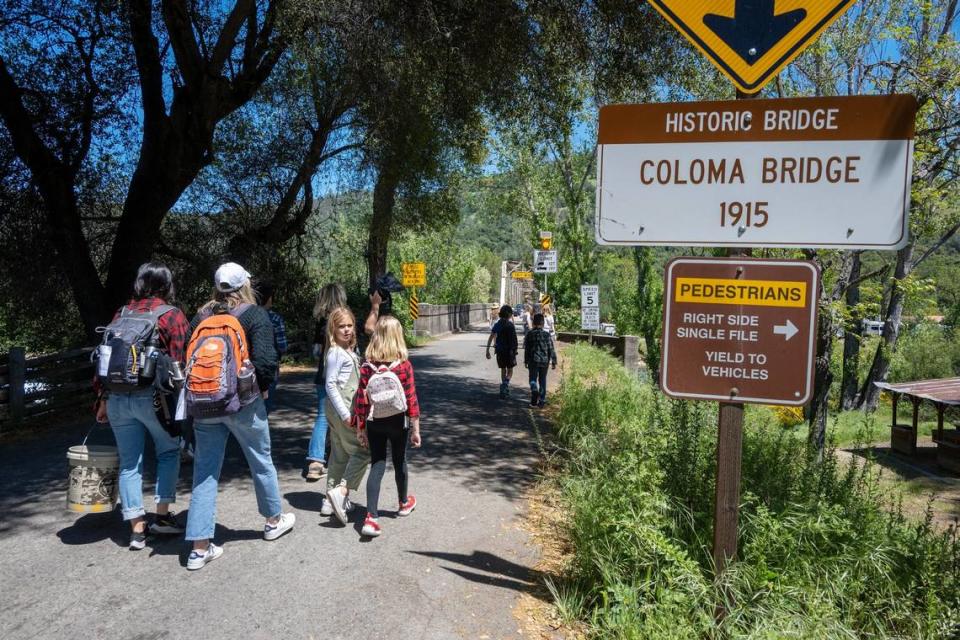
Jonathan Burgess said his family was never paid. Descendants, he said, had been thwarted for decades in their efforts to learn more about their grandfather’s land.
For Black Californians in both rural outposts and bustling cities, it was an all-too familiar refrain.
“The power of eminent domain has been repeatedly used to move Black and brown people off their land, to destroy homes and to devastate the opportunity for families to build generational wealth,” said state Sen. Steven Bradford, D-Gardena, vice chair of the California Legislative Black Caucus and member of the California Reparations Task Force.
Be informed, engaged and empowered residents of Sacramento
Sign up here to receive our weekly newsletter centered around equity issues in the capital region.
Black landownership plummets
Throughout much of the 20th century, racially motivated eminent domain, discriminatory lending and racist policy uprooted Black communities, displaced hundreds of thousands of Black Americans and erased billions of dollars in generational wealth.
The American Bar Association outlined the toll in its January 2023 report on historic Black land loss.
By 1997, Black-owned farmland in the U.S. shrank by more than 90% of the 16 million acres Black farmers owned in 1910, the report showed. The American Bar Association assessed the land value loss at $326 billion.
Black enclaves in California’s cities weren’t spared. Sugar Hill in Los Angeles, San Francisco’s Fillmore District, Russell City in Hayward and other thriving Black communities were derailed by eminent domain and redlining.
Bruce’s Beach in Manhattan Beach, near Los Angeles, was a popular oceanside resort for Black beachgoers at the turn of the last century. From 1912 to 1924, Willa and Charles Bruce’s beachfront getaway was an oasis from the vitriolic racism and segregation that barred Black people from beaches up and down the West Coast. Manhattan Beach took the land by eminent domain, dismantled the resort and erected a city park in its place.
Nearly a century later, Los Angeles County finally turned over the Bruce’s property to their descendants in 2022, but not after a two-year fight by family members, activists and city officials to return the land.
The city of Hayward annexed the Russell City community in the 1960s, seizing the land to make way for an industrial park, now home to a variety of biotech, advanced manufacturing, food, logistics and other businesses. Hayward forcibly evicted Russell City’s residents and demolished their homes and businesses. City leaders formally apologized in 2021 and have begun working with former Russell residents and descendants to determine appropriate restitution.
“There are hundreds, if not thousands of stories like the Burgesses,” Bradford said. “We’ve heard hundreds of stories about the efforts to take lawfully purchased properties — the legal taking of property denying generational wealth.”
Those stories include Bradford’s own. His childhood neighborhood in south Los Angeles is now home to Interstate 105, the 105 freeway.
“Those same houses were where I used to study music as a kid,” he says now.
The stories formed the beating heart of the California Reparations Task Force’s work, its 1,100-page report, a roadmap for the slate of bills that make up the 2024 Reparations Priority Bill Package.
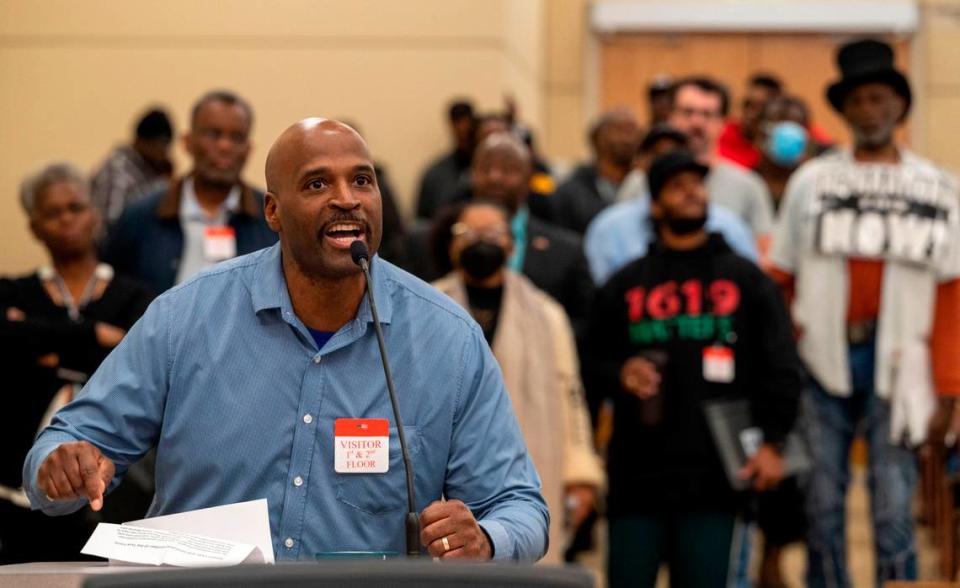
The historic toll of eminent domain on California’s Black communities and Black Californians’ generational wealth is behind Bradford’s latest bill, a linchpin of the historic reparations package now making its way through the legislature.
The bill, Senate Bill 1050, creates a pathway to return land or provide restitution to Californians who have had their land or property taken by the state or local government for racially motivated reasons, Bradford said. It will also create a way for the state to review claims of abuse and determine whether compensation is warranted.
Bradford, introducing the landmark reparations bill package in February, remarked on the lasting toll of racial bias on Black generational wealth.
“Many Californians were denied the ability to prosper and build generational wealth as a result of racial bias. We must remove the stain,” he said.
“Reparations was never about payments. It’s about land,” Bradford would say later. “That’s how generational wealth is passed on — land.”
Reclaiming the Burgess land and legacy
Jonathan Burgess remembers his elders’ simmering anger at how their land was taken. He remembers his mother, Bernice Powers Burgess, and her solitary fight to remind residents exactly whose land was now in the hands of the state and to demand recognition and recompense.
“This reclaiming of land starts well before me with my mother in the 1970s, ’80s and ’90s,” Burgess said.
“I remember my mom was so passionate,” Burgess said. “All that land up there — she was beside herself. She would say, ‘Look at what your grandfather went through.’”
Jonathan Burgess was in his teens when he picked up her mantle. The family’s cause is now a lifelong pursuit.
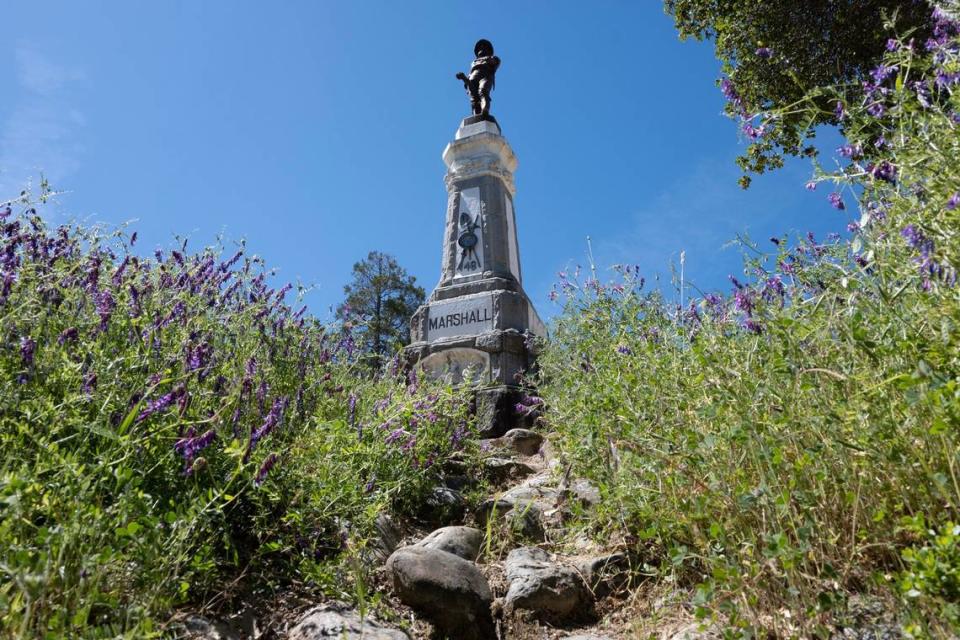
In 2021, Jonathan Burgess testified before Bradford and the first-in-the-nation task force to advance the case for reparations to California descendants of enslaved Black people. He had discovered a government document threatening prosecution of his grandfather and grandfather’s two brothers if they did not cede the land.
“Historical wrongs should not be accepted as status quo. The withholding of documentation for more than 75 years continues to be extremely disturbing to the family,” Burgess said.
The Burgess’ journey to reclaim land and legacy has rarely been marked by chance.
Burgess said other efforts to regain his family’s artifacts, belongings and property have been far less successful.
“We’ve come back with far less than I would desire,” he said. “Do I think it’s a piece of a larger story? Absolutely.”
In recent years, the State of California and California State Parks have acknowledged the Burgesses’ and other Black settlers’ land in Coloma and the Coloma Valley; families including the Julian, Monroe and Wilson families.
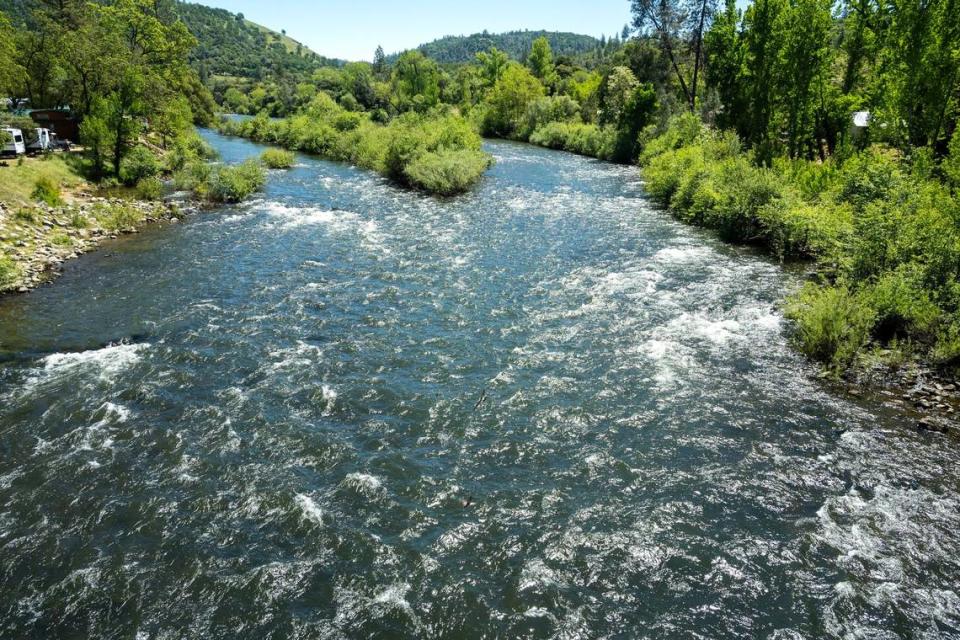
In 2020, the year before Burgess’ task force testimony, California State Parks began its Reexamining Our Past initiative, to “re-examine place names, monuments, and interpretations throughout the State Park System through a modern lens.”
State Parks officials said they had worked well before the 2020 initiative to “tell a more inclusive story” at Marshall Gold Discovery State Park, by “expanding its interpretation beyond what was once a narrow focus on memorializing the people and events leading up to the gold discovery and its immediate aftermath.”
That has meant new exhibits that detail the contributions of the Burgesses and other Black families who farmed, mined, had businesses and prospered in Coloma. It also has meant new and ongoing research into California State Parks’ acquisition of the properties that now make up Marshall state park.
“When the state took ‘a lot’ of family land to make a state park, I anticipate (lawmakers) will look at what ‘a lot’ is,” Burgess said. “I look forward to the governor signing legislation.”
Jameson and McClain saw something divine in their discovery. McClain said they are still puzzling out the mystery.
“At some point the picture was in San Francisco. I don’t know how it got to Glennville, California. The odds of it being thrown away? It’s a million-to-one that it didn’t make it into a trash can,” McClain said. “There’s so much that we don’t know that (Burgess) is finding out.
“We’re trying to find out who left it here. That’s the piece of the puzzle we’re trying to figure out,” McClain continued. “It was orchestrated perfectly to get into the right hands. It’s a great story.”

